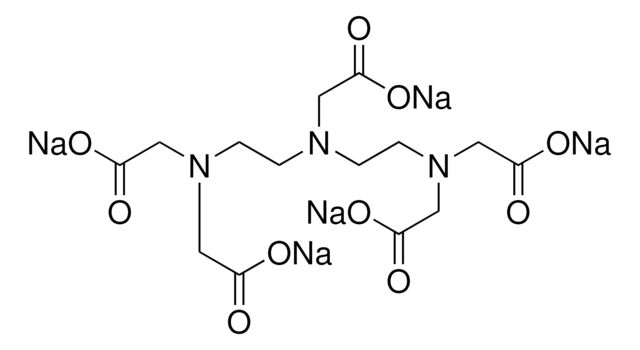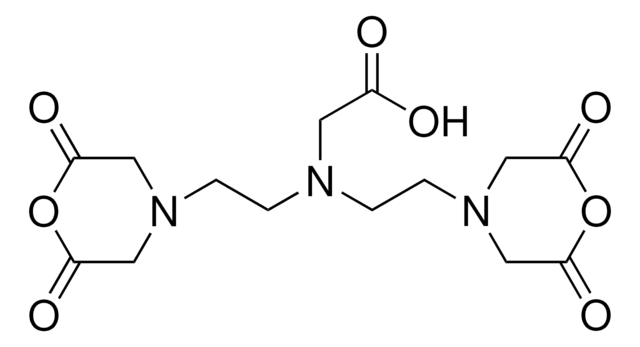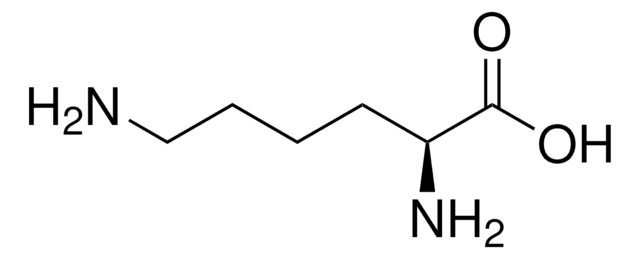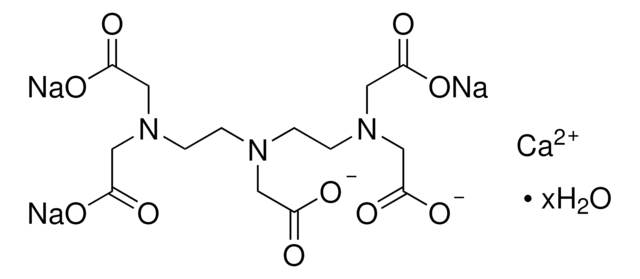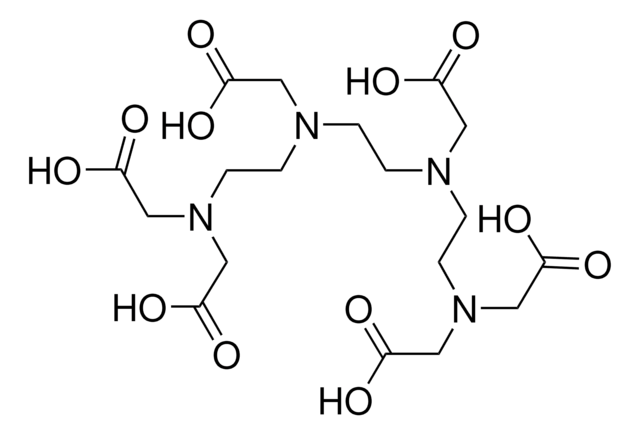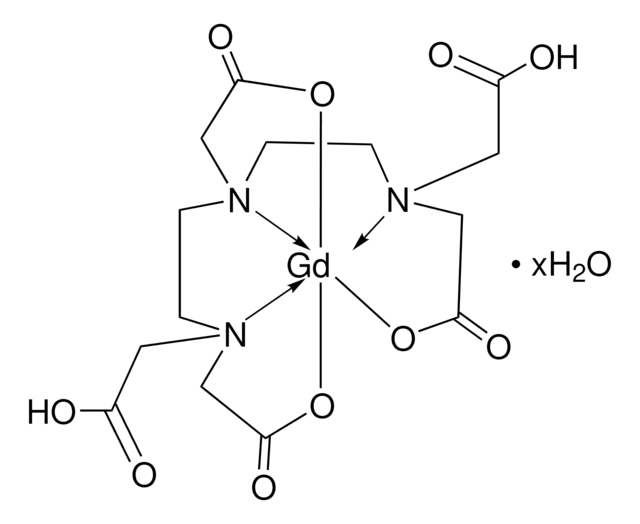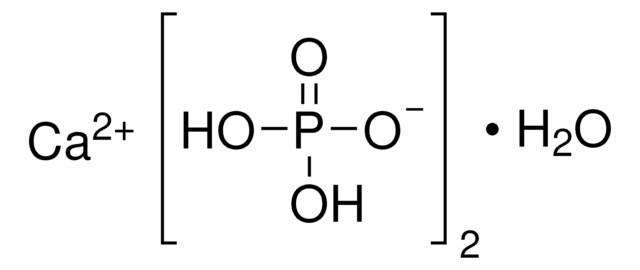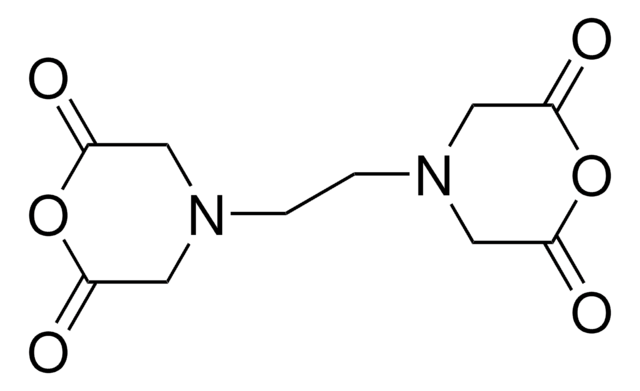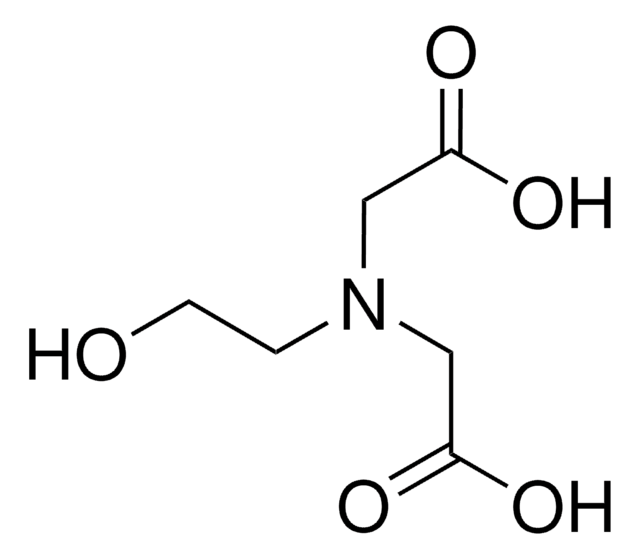Wichtige Dokumente
D1133
Diethylentriaminpentaessigsäure
≥98% (titration)
Synonym(e):
(Carboxymethylimino)-bis-(ethylennitrilo)-tetraessigsäure, Bis-(2-aminoethyl)-amin-N,N,N′,N″,N″-pentaessigsäure, DETAPAC, DTPA, Komplexon™ V, Penta-(carboxymethyl)-diethylentriamin
About This Item
Empfohlene Produkte
Biologische Quelle
synthetic (organic)
Assay
≥98% (titration)
Form
powder
mp (Schmelzpunkt)
219-220 °C (lit.)
Löslichkeit
1 M HCl: 50 mg/mL, clear, colorless
Lagertemp.
room temp
SMILES String
OC(=O)CN(CCN(CC(O)=O)CC(O)=O)CCN(CC(O)=O)CC(O)=O
InChI
1S/C14H23N3O10/c18-10(19)5-15(1-3-16(6-11(20)21)7-12(22)23)2-4-17(8-13(24)25)9-14(26)27/h1-9H2,(H,18,19)(H,20,21)(H,22,23)(H,24,25)(H,26,27)
InChIKey
QPCDCPDFJACHGM-UHFFFAOYSA-N
Suchen Sie nach ähnlichen Produkten? Aufrufen Leitfaden zum Produktvergleich
Verwandte Kategorien
Anwendung
Signalwort
Danger
H-Sätze
Gefahreneinstufungen
Acute Tox. 4 Inhalation - Eye Irrit. 2 - Repr. 1B - STOT RE 2 Inhalation
Zielorgane
Respiratory Tract
Lagerklassenschlüssel
6.1C - Combustible acute toxic Cat.3 / toxic compounds or compounds which causing chronic effects
WGK
WGK 2
Flammpunkt (°F)
392.0 °F - closed cup
Flammpunkt (°C)
200 °C - closed cup
Zulassungslistungen
Zulassungslistungen werden hauptsächlich für chemische Produkte erstellt. Für nicht-chemische Produkte können hier nur begrenzte Angaben gemacht werden. Kein Eintrag bedeutet, dass keine der Komponenten gelistet ist. Es liegt in der Verantwortung des Benutzers, die sichere und legale Verwendung des Produkts zu gewährleisten.
EU REACH Annex XVII (Restriction List)
Hier finden Sie alle aktuellen Versionen:
Besitzen Sie dieses Produkt bereits?
In der Dokumentenbibliothek finden Sie die Dokumentation zu den Produkten, die Sie kürzlich erworben haben.
Kunden haben sich ebenfalls angesehen
Unser Team von Wissenschaftlern verfügt über Erfahrung in allen Forschungsbereichen einschließlich Life Science, Materialwissenschaften, chemischer Synthese, Chromatographie, Analytik und vielen mehr..
Setzen Sie sich mit dem technischen Dienst in Verbindung.
